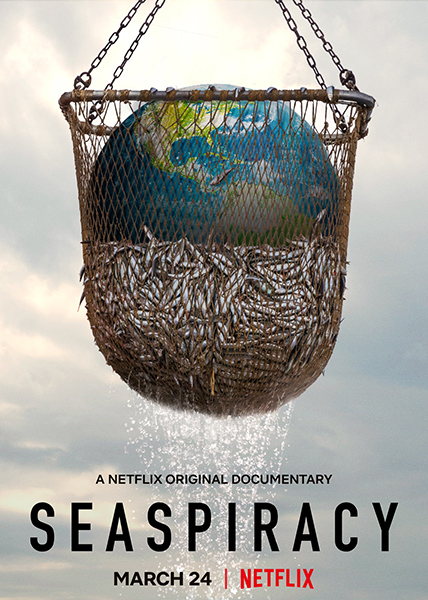Seaspiracy documentary offers critical look at fishing practices

The documentary discusses the even greater effect that commercial fishing has on the ocean.
April 12, 2021
The documentary Seaspiracy has been in the top 10 trending on Netflix globally since its release in late March.
Seaspiracy covers a wide range of topics, but its main focus is to show the dark nature of the global fishing industry. It is directed by Ali Tabrizi and produced by Kip Andersen.
The documentary begins with Tabrizi’s pursuit into raising awareness of plastic pollution in the ocean and the hunting of dolphins and whales in Japan. This leads him to visit Japan to expose the hunting, where he learns the extent that the government allegedly goes to keep it hidden.
From there, Tabrizi “follows the money” as he states. He finds that sharks and other endangered sea creatures are often killed en masse as “by-catch” — a term given to sea creatures unintentionally caught while fishing for another species.
One of the most interesting claims in the film is that the “dolphin friendly” label on some canned fish may not be trustworthy at all, as it relies to a great extent on the word of the fishing companies themselves.
The documentary later discusses the even greater effect that commercial fishing has on the ocean. It claims that around 46 percent of the pollution in the ocean is made up of discarded fishing nets and cables, often done so illegally.
During his research, Tabrizi travels to Thailand, where he discovers human slavery is being carried out on many fishing vessels. The documentary features anonymous interviews with Thai slaves who were fortunate enough to escape. This segment ends with Tabrizi narrowly escaping from the Thai government, which seems in the film to be set on keeping the human rights abuses confidential.
The film makes a lot of interesting points and reveals a lot of information on the various topics it discusses. One drawback is that it frequently jumps back and forth between different topics, which may be a little confusing for some.
Lastly, while the overall topic and presentation of the film is compelling, the conclusion is unsatisfying.
Seaspriacy’s solution to the issues it focuses on is for society as a whole to no longer eat fish. This goal, ultimately, is impossible to realistically achieve and avoids combating the problems head-on.



